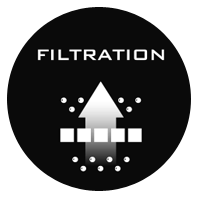Insulation
There are 2 main methods of insulating a hot tub. Most manufacturers use full foam insulation. A half-pound density open cell foam is sprayed in the entire cavity between the shell and the skirt. This may seem like a good way to keep heat in the hot tub, but it presents several problems including rodent infestation, hard to repair leaks, and health issues.
Wind River uses a unique 5-stage insulation package
- The hot tub shell is sprayed with 5-pound density closed cell structural foam. This foam is 10 times denser than the foam used in full foam hot tubs.
- Inside the cabinet area is an air cavity that traps heat and acts as an insulator. This air cavity gives easy access to 100% of the hot tub plumbing. This makes repairing a leak quick and easy. Many customers are able to repair a leak themselves without having to pay a service technician when the hot tub is out of its plumbing warranty.
- The next stage of insulation in a Wind River Spa is 2-inch thick bead-board insulating foam. This foam is placed between the perimeter supports and functions as an obstruction to warm air escaping the cavity.
- There is a plastic vapor barrier around these foam panels, which further seals the air cavity.
- To top it off, Wind River uses a molded plastic base that helps with the overall insulation and keeps rodents, snakes, spiders and hornets out of the hot tub. This also eliminates the concern for wood rot since no wood is used on the outside of the hot tub.
- During the snow storm of March 2003, several Wind River customers in Indian Hills went a week without power and their hot tubs did not suffer freeze damage because of the overwhelming success of the 5 stage insulation
- Wind River Spas is the only hot tub manufacturer that offers a 3 year warranty against freeze ups.





